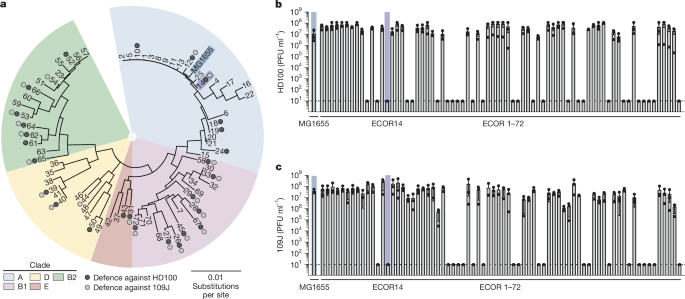
"Bdellovibrio bacteriovorus is a predatory bacterium that preys on Gram-negative bacteria by invading their periplasm, leaching nutrients, and lysing the cell to exit."
"Curli fibres, produced by some E. coli strains, provide a barrier protecting against predation. About one-third of E. coli strains robustly defended against B. bacteriovorus."
"Bioinformatic analysis reveals that functional amyloids are diverse and widespread among diderm bacteria, providing protection against various predatory threats."
"An evolutionarily distinct amyloid encoded by Pseudomonas aeruginosa has also been found to protect against Bdellovibrio bacteriovorus, indicating broad applicability of protective mechanisms."
Bdellovibrio bacteriovorus preys on Gram-negative bacteria by invading their periplasm and causing cell lysis. A study identified a significant subset of Escherichia coli strains that use curli fibres for protection against this predator. About one-third of these strains effectively defended themselves by producing these durable oligomeric structures. Furthermore, the curli fibres offered protection against other predators like Myxococcus xanthus and certain phages. Bioinformatic analysis showed that a variety of functional amyloids exist in diderm bacteria, with Pseudomonas aeruginosa also showing protective capabilities against Bdellovibrio.
#bdellovibrio-bacteriovorus #escherichia-coli #curli-fibres #functional-amyloids #bacterial-defense-mechanisms
Read at Nature
Unable to calculate read time
Collection
[
|
...
]